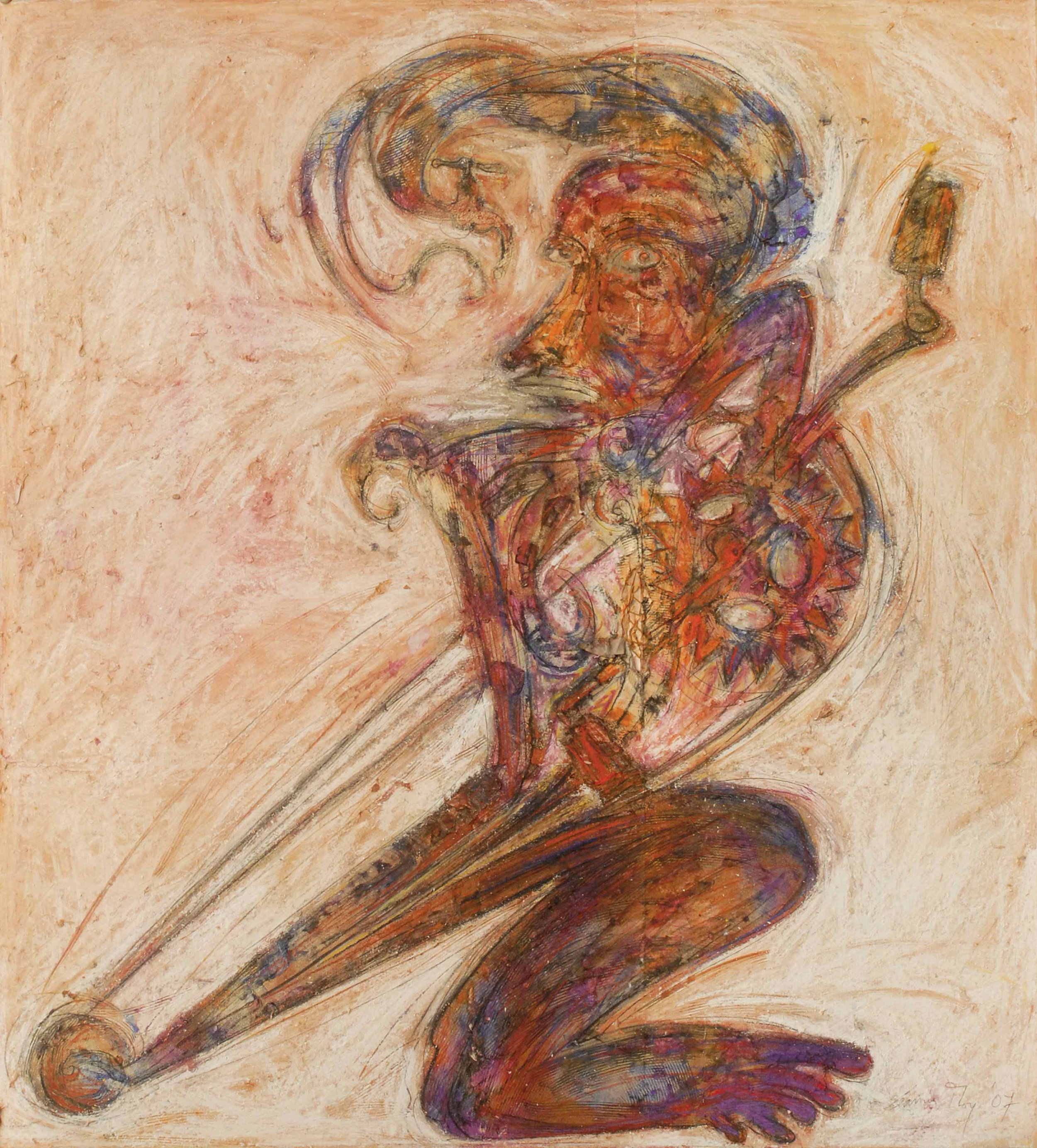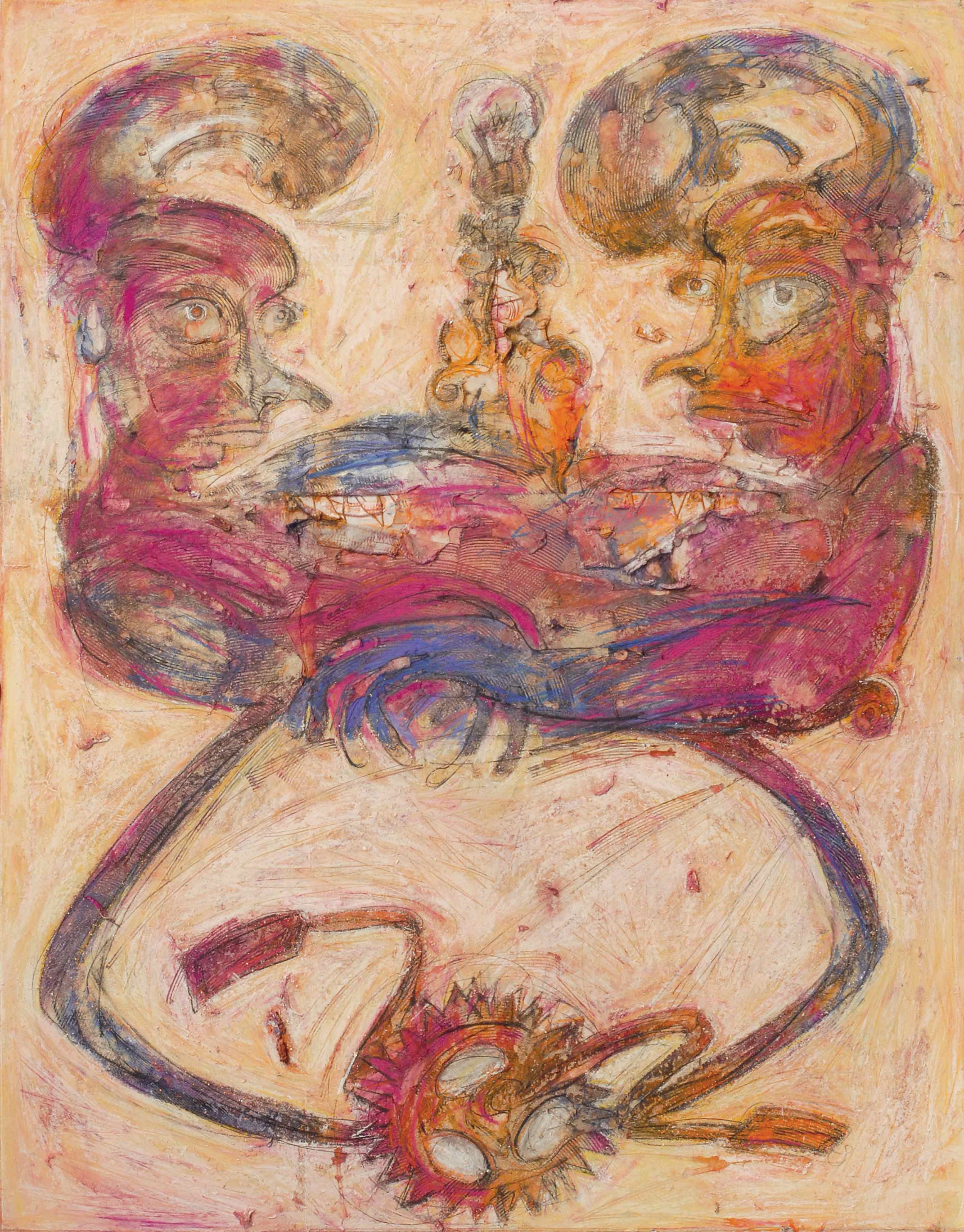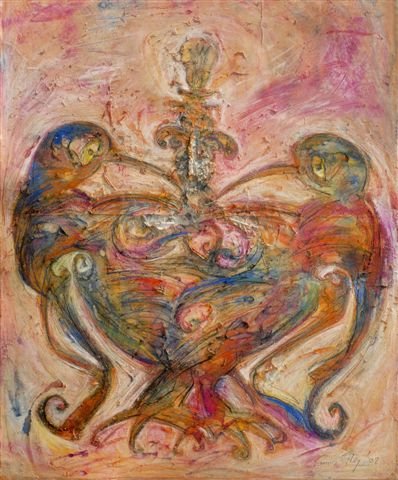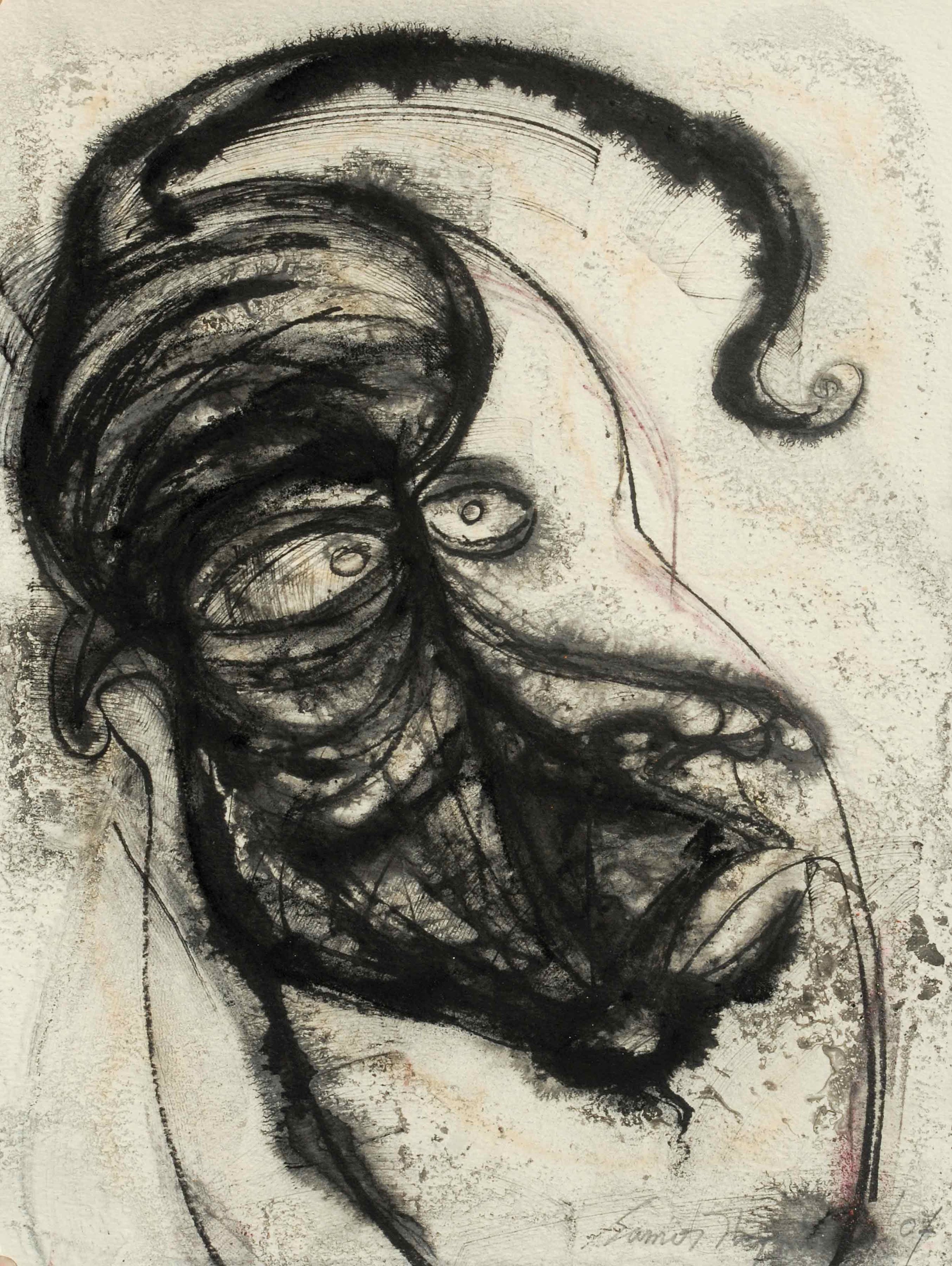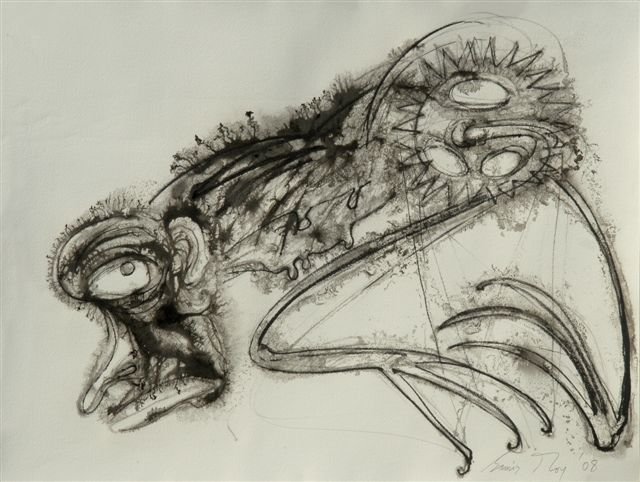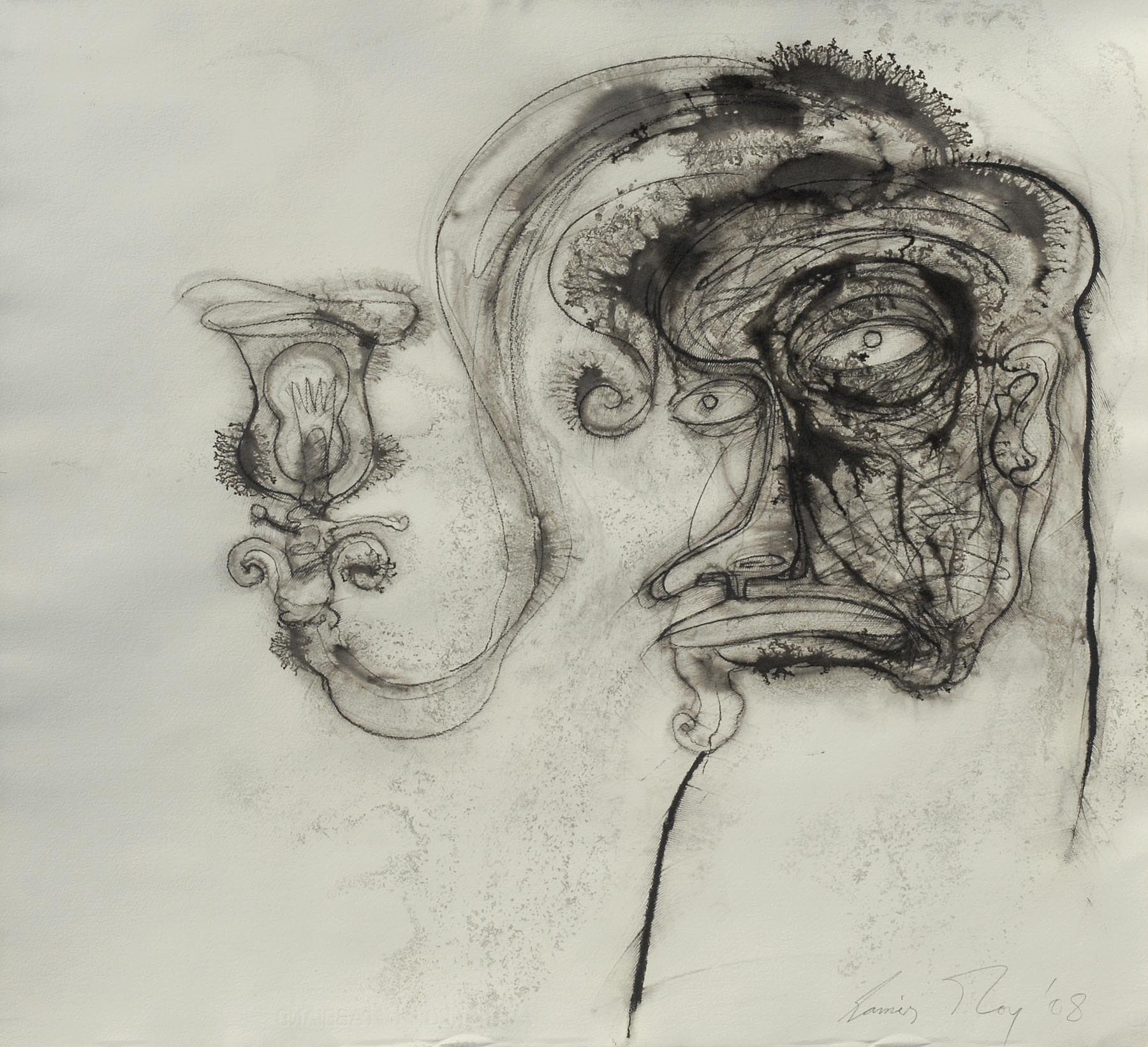
Quaint Gaze
February 2008
The 1970s was a witness to the significant contribution of the artists of Bengal to the language of post-independence Indian art.
Though this language was diverse in nature, the major portion of it involved a concern with figurative art. One important section of it was time and again reinforced with elements derived from primitive art and prehistoric cave paintings particularly in presenting zoomorphic forms. This return to primitivism has always been a significant characteristic of modernism world wide. The raw vitality of primitivism was used by artist as an essential mean towards reclaiming their political voice. In this context the works of late Nikhil Biswas is of immense significance. He created a genre that was extensively worked upon in the 70s and even in the 80s to a great extent. Artists explored the various possibilities of the vocabulary in presenting individual line of artistic thinking. The consequent artistic expressions coming up later became quite different from the point of their take off, as they acquired several other attributes on their journey forward. But here it is important to mention that the most successful experimentations where those which combined essentially compatible elements derived from diverse sources. One of the most visible and effective experimentations in this line was that of Samir Roy (b. 1961).
Like any other student of art, Samir Roy too was trained in the realist-illusionist tradition at the Indian College of Art and Draftsmanship, Kolkata, during the mid 1980s. This training involved an intimate viewing of the objects of interest. In Samir’s case during these formative years, the subject of study was animal, particularly goat, as it was the most easily available creature all around. At home the other animal of close observation was the pet dog. He was simultaneously looking at the structural similarities of the two creatures and the differences in body languages of these two animals. After a point of time Samir was consciously combining structural elements of one animal with definite gestural body languages of another animal. One ready reference was off-course Late Sukumar Ray’s illustrations for Aboltabal. Numerous painterly challenges in creation of hybridity through combining features of characteristically opposite animals were solved with an aid of animated linear drawings. Therefore the black and white ink drawings are the most strong points in his entire body of works. The textural qualities of cave paintings in Samir’s work contribute to the starkness of the hybrid creatures. In his early works the usage of thick hand-made paper and on it an application of thick paint prepared with dust clay, oxide colours and glue brought in the textural effects of cave walls. At places the effects of peeled off colours added to the vulnerability of the images. The images built up with the vividness and raw vitality of cave painting was impregnated with a deep human gaze quite similar to that of his own gaze. This gaze has been deliberately intensified with use of motifs like the binocular at the position of the eyes. Moreover ordinary actions as riding a bicycle, sitting on a stool reflect an attempt to cultivate the gestural qualities of the pre-historic masked dancer in cave paintings. The strange being at times like a half human and a half animal or a reptile or even at times partly like a masculine beast with breasts of a female human makes an appeal to the on looker with its grotesqueness. The queer being stands out prominently as the ‘other’, simultaneously looking at the ‘rest’ outside and reflecting on the ‘self’ within.
Adip Dutta
Wheels within wheels | Mixed media | 43 x 41.5 in
Affection | Mixed media | 41.5 x 49 in
A Warrior | Mixed media | 57.5 x 51 in
Bonding | Mixed media | 53 x 41.5 in
Journey | Mixed media | 52.5 x 62.5 in
Inquisitor | Mixed media | 39.5 x 52 in
Wheels within wheels | Mixed media | 46 x 54.5 in
Thinker | Mixed media | 61 x 41.5 in
Take off to infinity | Mixed media | 42.5 x 56 in
Siblings | Mixed media | 50 x 41 in
Musician | Mixed media | 61.5 x 41.5 in
Sadhu with pet | Ink & charcoal | 30 x 27.5 in
Sadhu with pet | Ink & charcoal | 27.5 x 30 in
Quaint Gaze VII | Ink & charcoal | 19 x 14 in
Quaint Gaze VI | Ink & charcoal | 19 x 14 in
Quaint Gaze V | Ink & charcoal | 55 x 30 in
Quaint Gaze IV | Ink & charcoal | 27.5 x 36 in
Quaint Gaze III | Ink & charcoal | 26 x 30 in
Quaint Gaze II | Ink & charcoal | 19 x 14 in
Light & Myself III | Ink & charcoal | 36 x 55 in
Light & Myself Ink & charcoal | 27.5 x 30 in
Homosapiens II | Ink & charcoal | 55 x 30 in
Homosapiens I | Ink & charcoal | 40.5 x 55 in
Entangled | Ink & charcoal | 21 x 27 in



